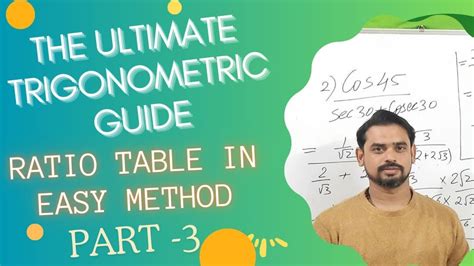Introduction

Trigonometry is a branch of mathematics that deals with the relationships between the sides and angles of triangles. It is a fundamental tool for understanding and solving problems in physics, especially in mechanics. In AP Physics 1, students will encounter a wide range of problems that require the use of trigonometry.
Sinus, Cosinus, Tangent
The three main trigonometric functions are sine, cosine, and tangent. These functions are defined as follows:
- Sine (sin) = opposite / hypotenuse
- Cosine (cos) = adjacent / hypotenuse
- Tangent (tan) = opposite / adjacent
Using Trig to Solve Physics Problems
Trigonometry can be used to solve a variety of physics problems, including:
- Projectile motion: Calculating the trajectory of a projectile, such as a ball thrown in the air.
- Circular motion: Calculating the velocity and acceleration of an object moving in a circle.
- Statics: Calculating the forces acting on an object in equilibrium.
- Dynamics: Calculating the acceleration, velocity, and displacement of an object in motion.
Tips and Tricks for Using Trig in Physics
Here are some tips and tricks for using trigonometry in physics:
- Draw a diagram: Before you start solving a problem, draw a diagram of the situation. This will help you to visualize the problem and identify the relevant angles and sides.
- Use the Pythagorean theorem: The Pythagorean theorem states that in a right triangle, the square of the hypotenuse is equal to the sum of the squares of the other two sides. This theorem can be used to find the length of any side of a right triangle.
- Use the trigonometric identities: The trigonometric identities are a set of equations that relate the trigonometric functions to each other. These identities can be used to simplify trigonometric expressions and solve problems.
- Use a calculator: A calculator can be helpful for evaluating trigonometric functions and solving problems. However, it is important to be able to use trigonometry without a calculator as well.
FAQs
Here are some frequently asked questions about trigonometry in AP Physics 1:
-
What is the difference between sine, cosine, and tangent?
- Sine is the ratio of the opposite side to the hypotenuse, cosine is the ratio of the adjacent side to the hypotenuse, and tangent is the ratio of the opposite side to the adjacent side.
-
How can I use trigonometry to solve physics problems?
- Trigonometry can be used to solve a variety of physics problems, such as projectile motion, circular motion, statics, and dynamics.
-
What are some tips for using trigonometry in physics?
- Draw a diagram, use the Pythagorean theorem, use the trigonometric identities, and use a calculator.
Conclusion
Trigonometry is a powerful tool for understanding and solving problems in physics. By mastering the concepts of trigonometry, students will be well-prepared for success in AP Physics 1 and beyond.
Additional Resources
